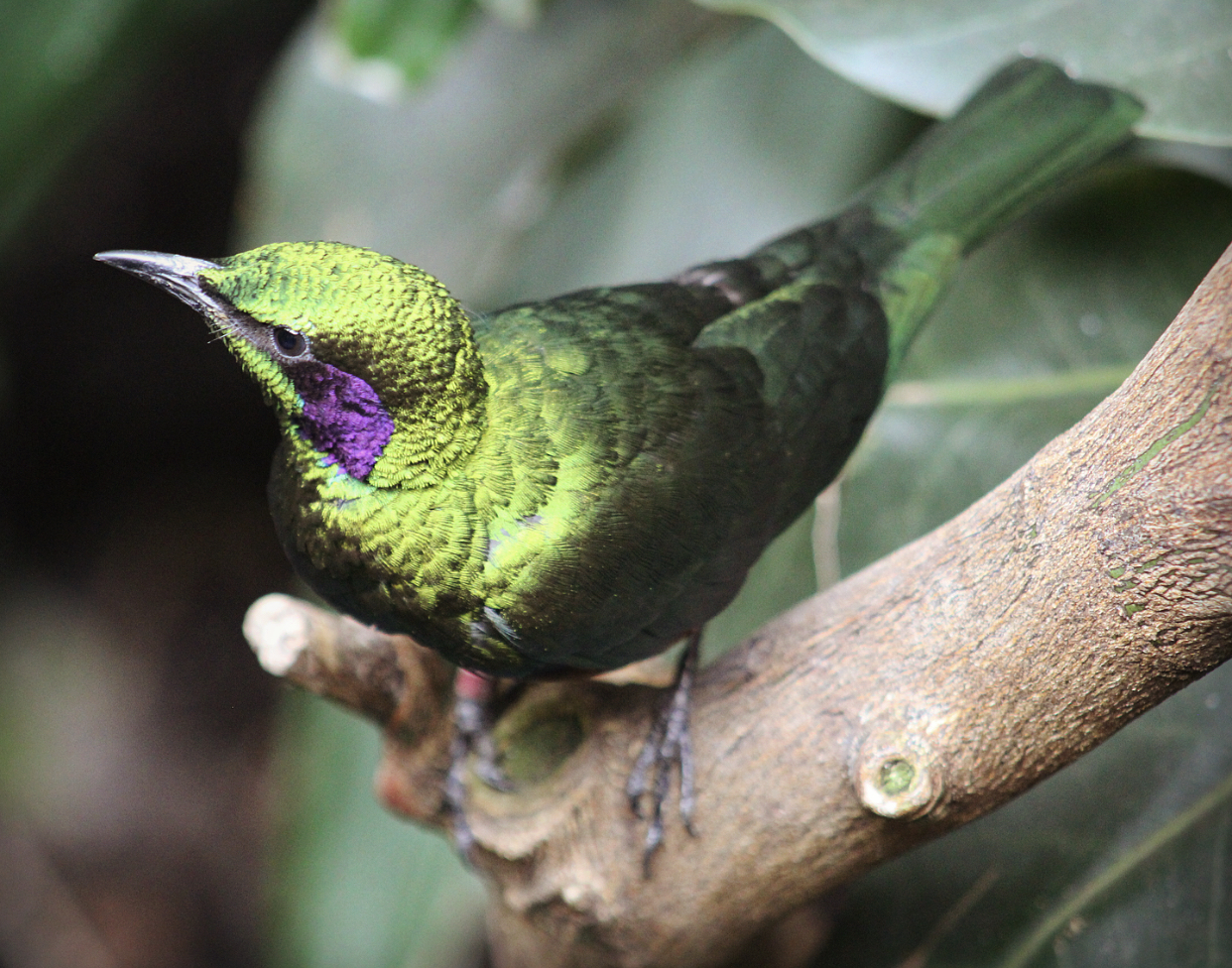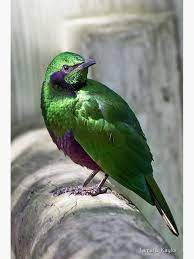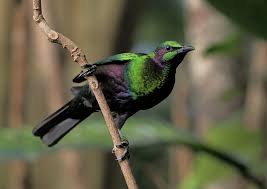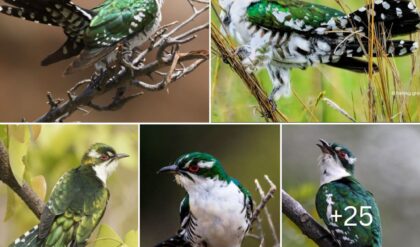The emerald starling, scientifically known as Lamprotornis iris or iris glossy starling, is a petite starling species characterized by a metallic green crown, upper body, wings, and tail. Its ear-coverts and underparts exhibit a metallic purple hue. Both males and females share similar appearances. While many taxonomists group it with various other glossy starlings under the genus Lamprotornis, some place it in a monotypic genus called Coccycolius.
 This starling species, among the smallest within its family, is found in West Africa, specifically in the lowlands and savannas of Côte d’Ivoire, Guinea, and Sierra Leone.
This starling species, among the smallest within its family, is found in West Africa, specifically in the lowlands and savannas of Côte d’Ivoire, Guinea, and Sierra Leone.

The emerald starling’s diet consists of figs, Haronga berries, various fruits, seeds, ants, and other small insects. For nesting, the birds construct cup-shaped nests within tree cavities. Both male and female birds collaborate in nest-building, using leaves, and after hatching, they share the responsibility of feeding the chicks.

Formerly categorized as data deficient by the IUCN due to insufficient available information, subsequent studies revealed that the emerald starling is relatively widespread and locally common. Consequently, its IUCN rating was changed to “least concern” in 2015. While the species faces threats from capture for the wildlife trade and local challenges posed by mining activities, the overall impact on its population is not anticipated to lead to a significant decline.


